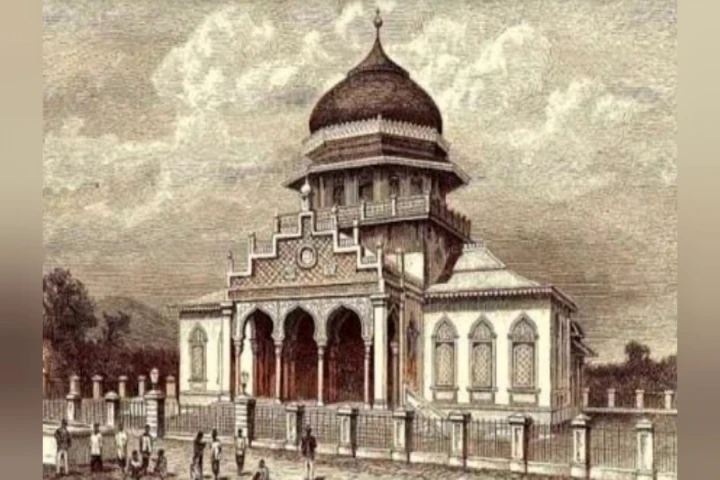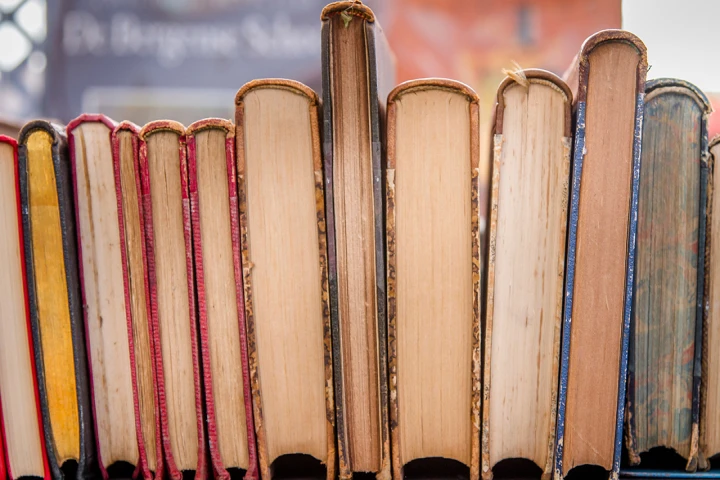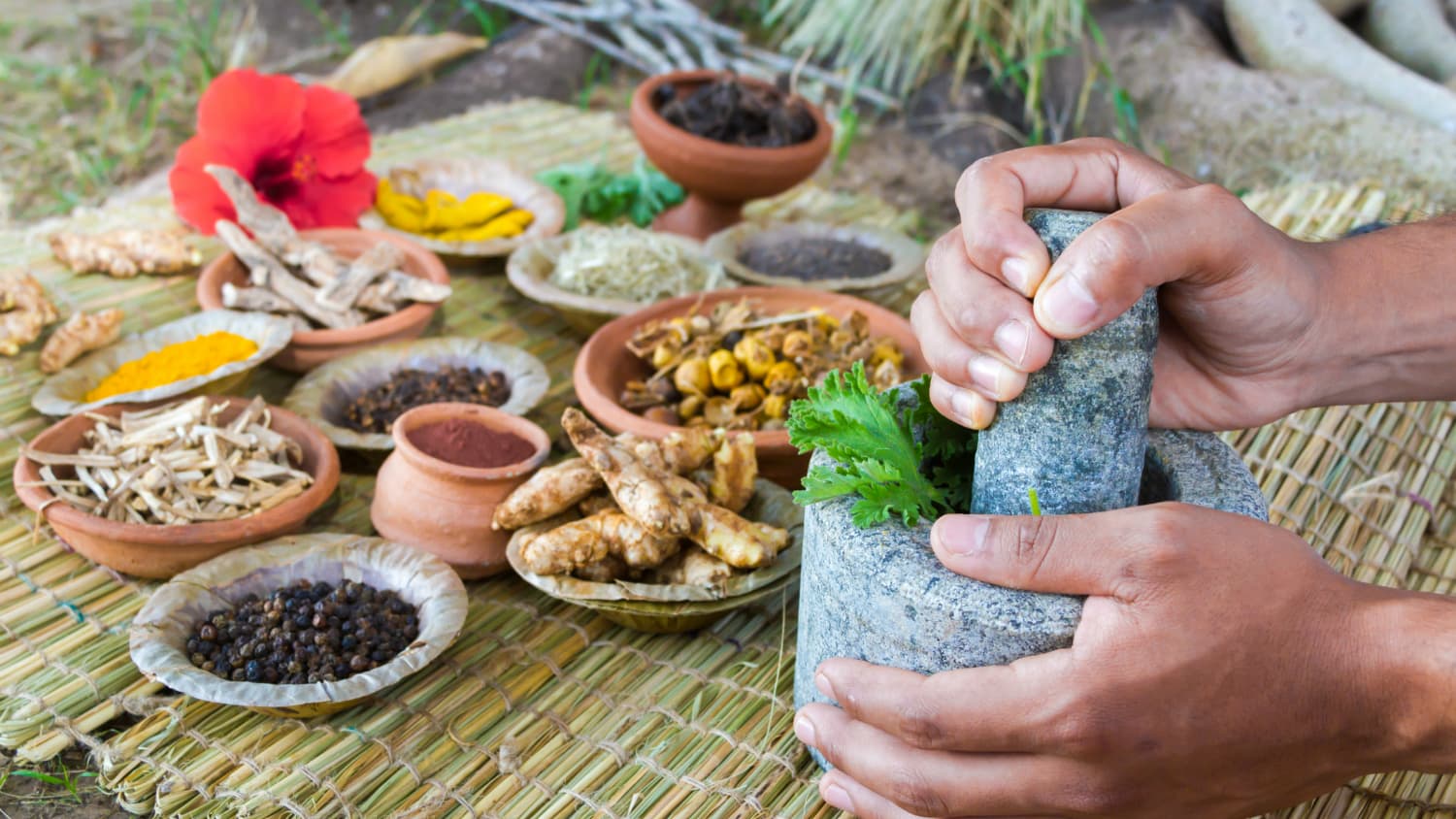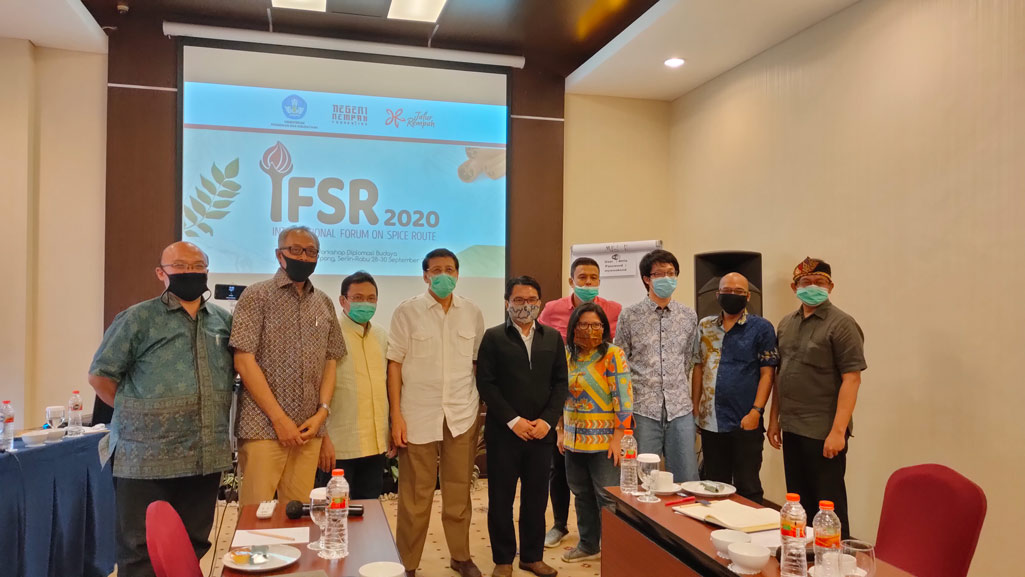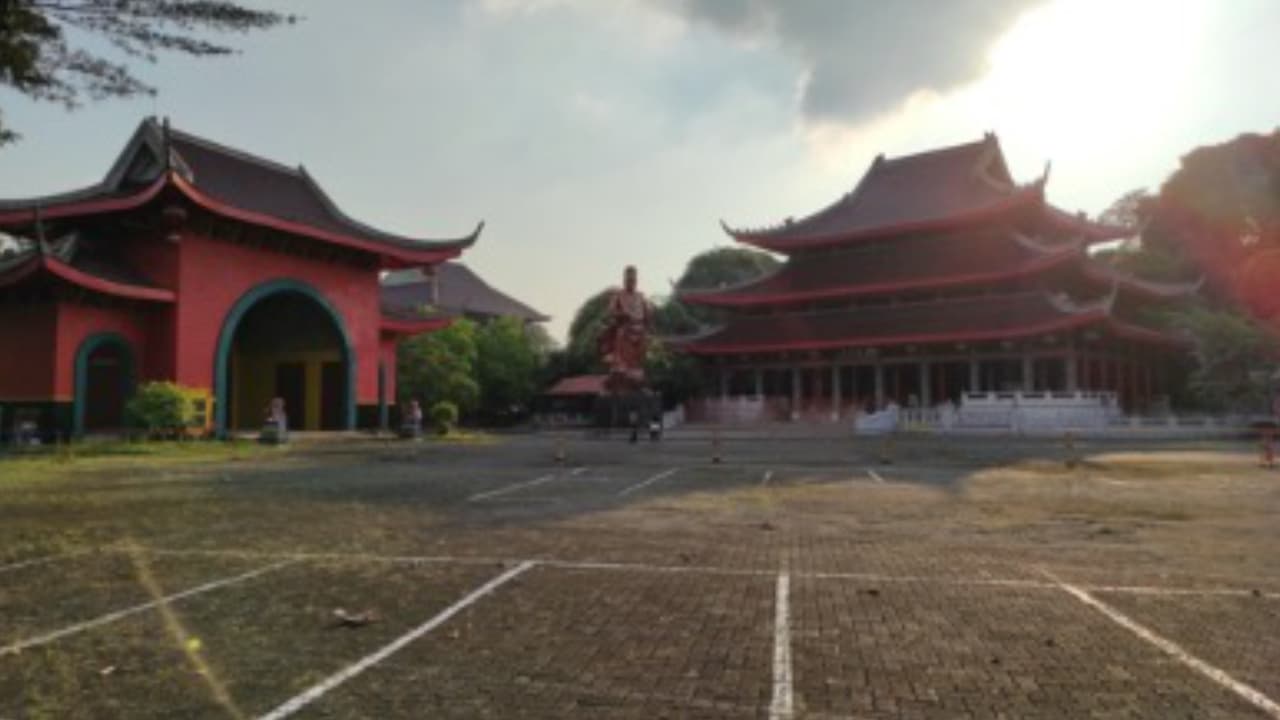
To tell a story about the port of Semarang in the trade era centuries ago is not a simple task. Because the hustle and bustle of the city have long gone, and some of them did not even leave a trace.
The port of Bergota is an example, a port in Semarang as one of the busiest seaports during the Ancient Mataram or the Hindu Mataram Kingdom. The port has existed since the 9th century. However, today, it left us no trace at all but notes in the history books.
In a webinar entitled “Romansa Kekayaan Rempah Jawa“, Tavip Supriyanto, the mayor of Semarang, explained that the port of Bergota distributed food supplies in the voyages. Unfortunately, the sedimentation led the port to become shallower, and thus the coastline moved to the north. The wealth trace of the Port of Bergota disappeared following the sedimentation. It formed a land. Today, it has even changed its function as a vast cemetery.
Prof. Dr. Singgih Tri Sulistiyono, a maritime historian and a lecturer at the Faculty of Humanities, Diponegoro University, stated the same thing. He said that the port of Bergota played a significant role in the Hindu Mataram Kingdom. It functioned as a meeting point for the local community in Java and the foreigners who brought influences.
In the next era, the development of the port of Semarang was revived in the early 15th century. Approximately, it was located around Bulu Market, which extended into Simongan. Chinese traders filled the coastal area of Semarang.
Semarang also became a port of call for Cheng Ho’s fleet, the Chinese explorers, while visiting several cities on the North Coast of Java. The legend of their monumental arrival was enshrined in a building we know as Sam Poo Kong Temple.
Cheng Ho fleet’s arrival became the origin of the Chinese-Muslim community’s settlement development in Simongan. They enlivened the trade activities in the port. Aside from exchanging commodities, the traders brought cultures that merged with the local cultures, and thus the cultural assimilations became unavoidable. Therefore, it became historical data that proved the multiculturality of Semarang began with the emergence of international trade in the port.
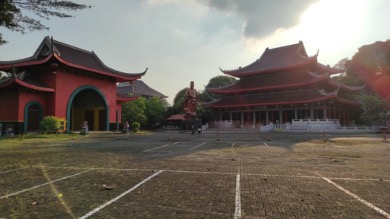
Sam Poo Kong Temple, the trace of pluralism in Semarang.
From Jepara to the Golden Era of the Port of Semarang
The 16th century became one of the golden eras of Semarang. During this era, the port of Semarang replaced Jepara’s role as the trade port of Nusantara. Like Bergota, the sedimentation made the seaport of Jepara no longer adequate to become a berth for the large vessels. Even in the next period, Semarang replaced the VOC defense base in Jepara.
The compelling reason why Semarang became more crowded than Jepara Port was the ideal geographical location, supported by the fertile plain that surrounded it. Semarang then became the entrance and exit of various crops commodities from the Central Java interior. As a result, the port of Semarang was filled by local and international ships and traders.
With Malacca, Johor-Siak, Batavia, Cirebon, and Makassar, Semarang played a significant role in commerce during the 15th to 16th centuries in Nusantara. In addition, a series of port cities were connected in the international trade network to China and Europe.
In an interview with the Spice Routes editorial team (26/4), Prof. Dr. Singgih explained, “The the port of Semarang’s development was inseparable from the development of the economic and political centers in the Indonesian archipelago, Southeast Asia and even farther, in the regional context, in its relation with China and India.”
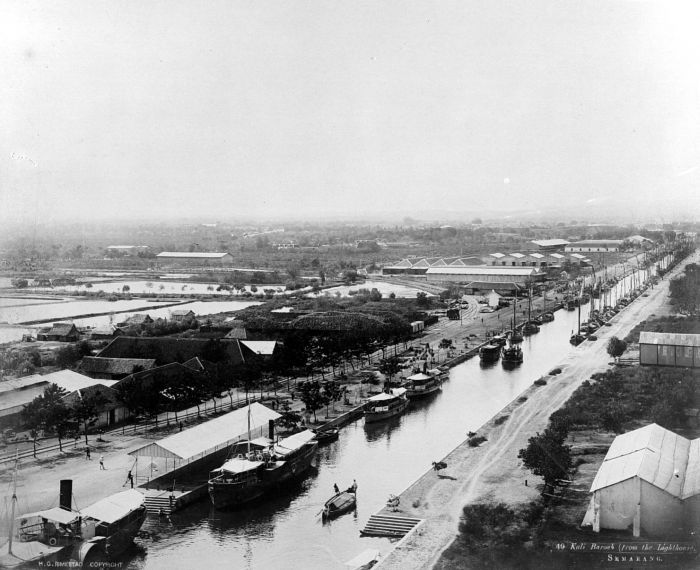
Semarang in the 19th century.
The Commodities
Although Semarang was known as one of the significant areas in Nusantara, unlike Maluku, Semarang did not produce spices. Instead, the role of Semarang in the voyage era was to supply the ships’ basic needs in a long-distance voyage with rice, fruits, water, and other necessities. The port of Semarang also became a location to transport commodities and exchange goods and cultures.
Besides the foodstuffs, Semarang and its surrounding areas became places to collect some crafts. One example was various fabrics, including fabric from Jepara, like troso, and various kinds of woven fabric.
Besides the stuff mentioned above, Prof. Singgih explained other commodities in Semarang during that era. “After many immigrants from China, Semarang was also one of the exporters of sugar that was produced using modern machines,” he explained. A famous Chinese born in Semarang, Oei Tiong Ham, acquired five sugar factories and was recorded as the biggest sugar producer in the Dutch East Indies.
“There was supply and demand between the port of Semarang or the Semarang community with other places in the world economic centers. Also, Semarang could produce products that could be used in the trade across islands or globally. Because during that era, rice and woven became ones among the effective medium of exchanges to obtain pepper,” explained Prof. Dr. Singgih.
From the explanation, the role of Semarang as a place for the fleet which carried spices from the eastern part of Nusantara to exchange spices with rice or other local commodities was more apparent. However, it did involve not only local residents but also the Chinese and Indian traders who stopped at the port.
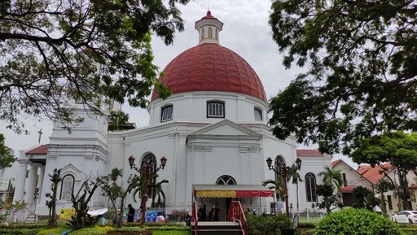
Gereja Blenduk, one of Semarang landmarks.
Semarang in the 17th Century
The increased trading activity in the port of Semarang brought further development to the surrounding areas, primarily after Semarang was formed as a government area and an agreement between the Mataram Kingdom and VOC. As a result, the facilities and infrastructures were built around the port to support the trading activities. In addition, there were various community facilities, including settlements, worship places, and shops.
The spice trade in Semarang brought various cultural acculturations between the indigenous and newcomers. From fulfilling the architectural aspects (from the city planning to the designing), arts, and the more modern people’s mindset followed the development needs at its time.
The development of Semarang Old Town was the beginning of modernization in Semarang. With the unique architecture, until today, a lot of Dutch building heritage still stands firm. In the same area stands a building that becomes the landmark of Semarang called the Blenduk Church, which is still in use today and has been designated as a national tangible cultural heritage.
The activities that occurred in the past also left many traces in the Pecinan area. The establishment of Tay Kak Sie Temple, Sam Poo Kong, and other temples scattered around the areas of Semarang became one of the Spice Routes’ heritage evidence in the cultural diversity, to the pluralism of the community in this place. It also gave various patterns to the development process of the City of Semarang.
________
Sources:
An exclusive interview of the Spice Routes editorial team with Prof. Dr. Singgih Tri Sulistiyono, M.Hum., a maritime historian and a lecturer of the Faculty of Humanities of Diponegoro University.
Webinar “Romansa Kekayaan Rempah Jawa”, accessed on 15 December 2020
Photo Sources: Tropenmuseum Collection
________
Text: Tiya S.
Editor: Doni Ahmadi
Translator: Dhiani Probhosiwi



